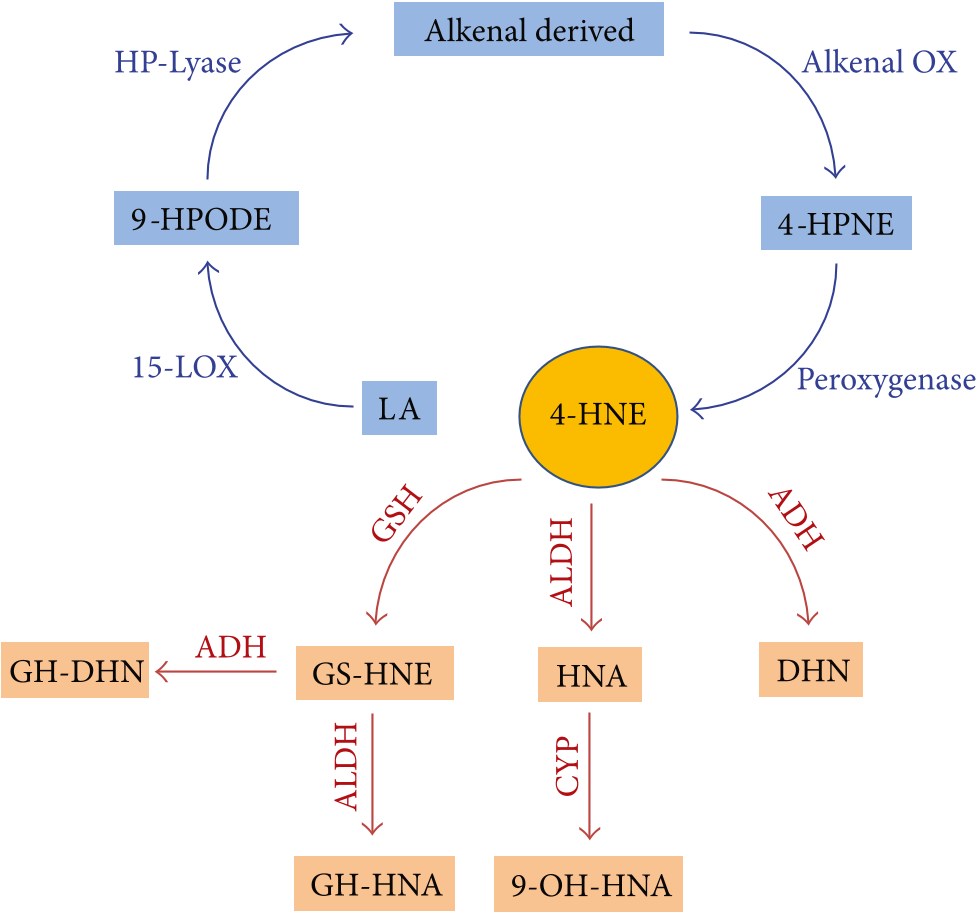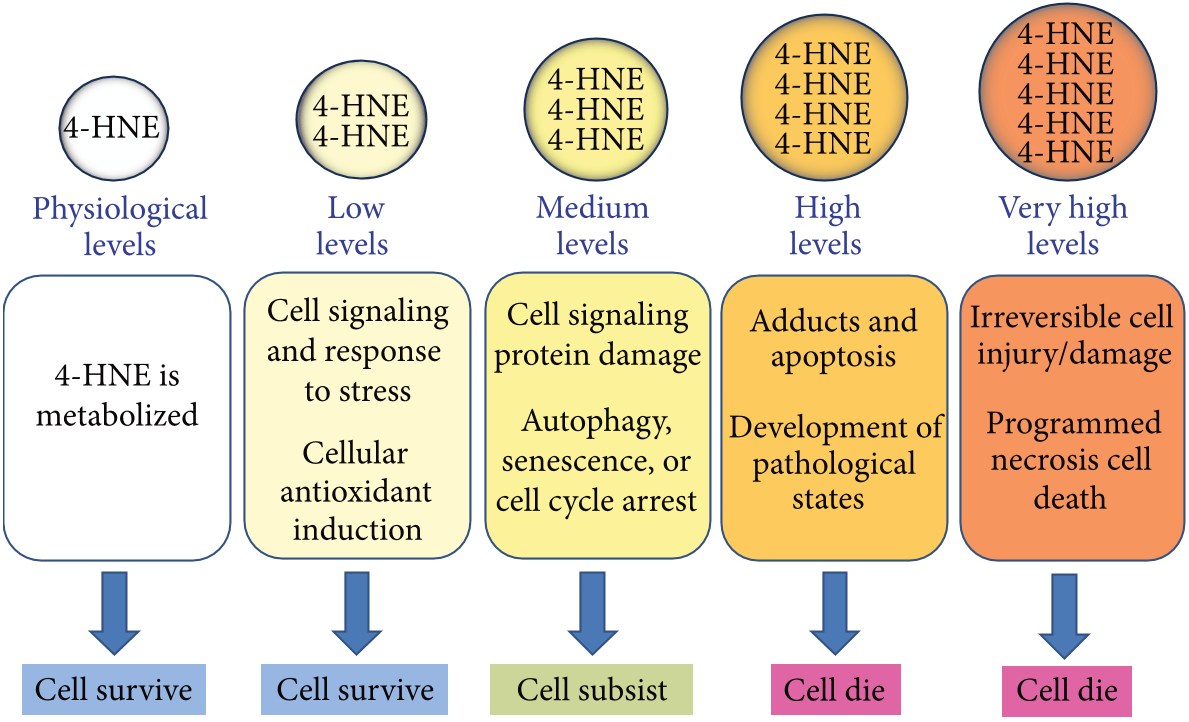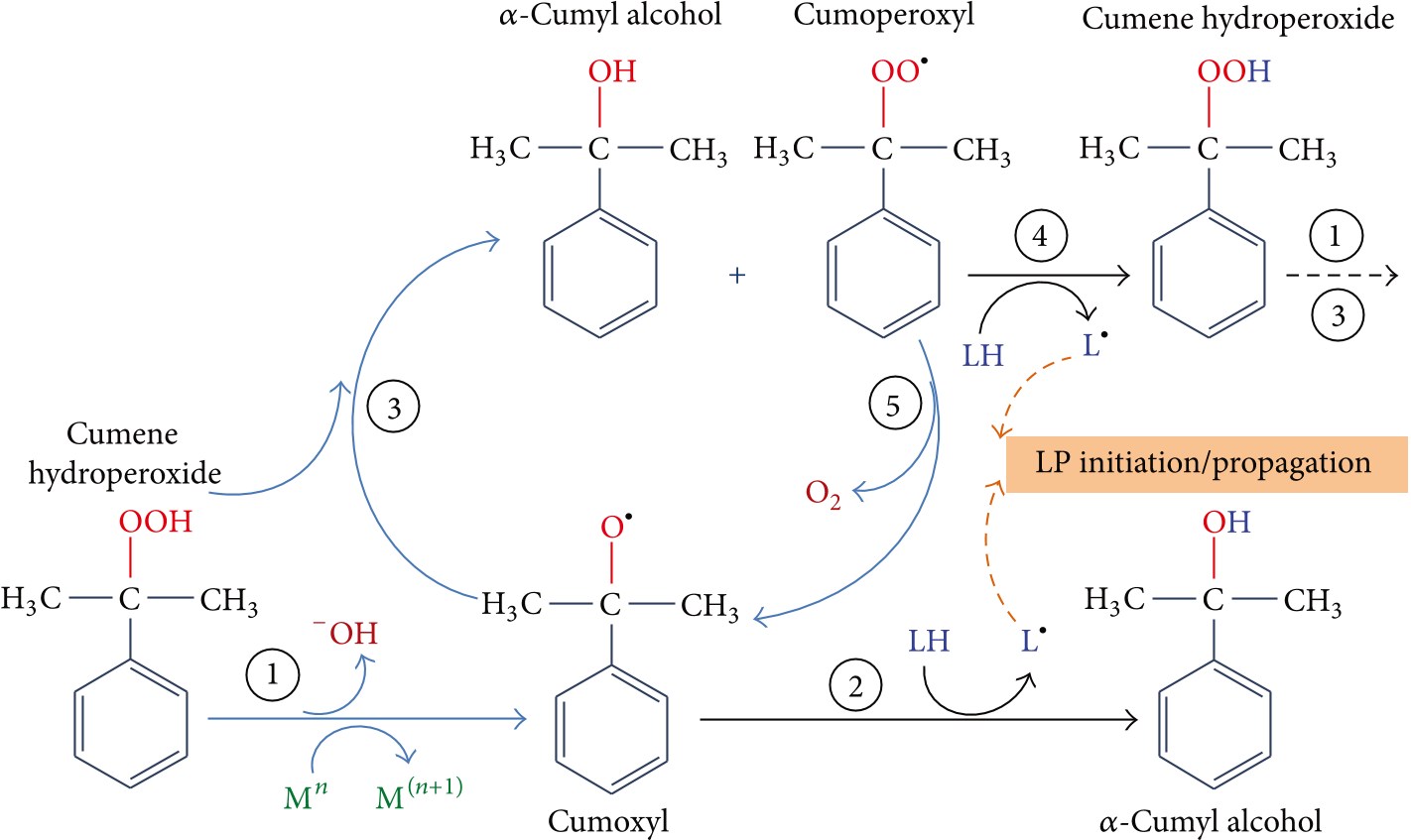Review paper
Lipid Peroxidation: Production, Metabolism, and Signaling Mechanisms of Malondialdehyde and 4-Hydroxy-2-Nonenal
Abstract
Lipid peroxidation can be described generally as a process under which oxidants such as free radicals attack lipids containing carbon-carbon double bond(s), especially polyunsaturated fatty acids (PUFAs). Over the last four decades, an extensive body of literature regarding lipid peroxidation has shown its important role in cell biology and human health. Since the early 1970s, the total published research articles on the topic of lipid...
Figures & Tables

Figure 2: Lipid peroxidation process. In Initiation, prooxidants abstract the al...

Figure 3: MDA formation and metabolism. MDA can be generated in vivo by decompos...

Figure 4: Enzymatic production of 4-HNE and metabolism. In plant enzymatic route...

Figure 5: Nonenzymatic 4-HNE production. Initial abstraction of bisallylic hydro...

Figure 6: 4-HNE promotes cell survival or induces cell death. Depending on cell ...

Figure 7:Mechanisms showing how cumene hydroperoxide produces lipophilic cumoxyl...

Table 1: Common pathological processes linked to MDA and 4-HNE.
Paper Details
Title
Lipid Peroxidation: Production, Metabolism, and Signaling Mechanisms of Malondialdehyde and 4-Hydroxy-2-Nonenal
Published Date
Jan 1, 2014
Volume
2014
Pages
1 - 31
TrendsPro
You’ll need to upgrade your plan to Pro
Looking to understand a paper’s academic impact over time?
- Scinapse’s Citation Trends graph enables the impact assessment of papers in adjacent fields.
- Assess paper quality within the same journal or volume, irrespective of the year or field, and track the changes in the attention a paper received over time.
Citation AnalysisPro
You’ll need to upgrade your plan to Pro
Looking to understand the true influence of a researcher’s work across journals & affiliations?
- Scinapse’s Top 10 Citation Journals & Affiliations graph reveals the quality and authenticity of citations received by a paper.
- Discover whether citations have been inflated due to self-citations, or if citations include institutional bias.